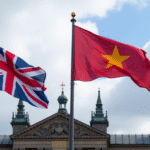Background on Japan’s Inflation Rate
Japan, known for its economic stability and low inflation rates for decades, has recently experienced a significant shift. The country’s consumer price index (CPI), a key measure of inflation, rose by 3.2% in March compared to the same period last year. This increase is primarily driven by rising prices of accommodations and food, with vegetables like cabbage seeing an astounding 111.6% increase and rice experiencing a 92.5% rise.
Historical Context and Relevance
Japan’s inflation rate has been historically low, averaging around 0.5% over the past two decades. This recent surge is unusual and has drawn attention from economists and policymakers alike. The country’s central bank, the Bank of Japan, has long aimed to maintain low inflation rates to support economic growth and stability. However, the global supply chain disruptions, increased energy prices, and geopolitical tensions have contributed to this unexpected rise.
Impact on Consumers and the Economy
The surge in inflation directly affects Japanese consumers, as their purchasing power decreases due to higher prices. This situation may lead to reduced consumption and slower economic growth. Moreover, the increased cost of living could potentially impact Japan’s export competitiveness, as higher production costs might make Japanese goods more expensive for international buyers.
Key Factors Driving Inflation
- Global Supply Chain Disruptions: The ongoing pandemic and geopolitical tensions have caused significant disruptions in global supply chains, leading to shortages and increased prices for various goods.
- Rising Energy Prices: The war in Ukraine has caused energy prices to soar, affecting not only Japan but also other countries reliant on Russian energy exports.
- Increased Food Prices: Adverse weather conditions and geopolitical tensions have contributed to a global increase in food prices, impacting Japan’s vegetable and rice markets.
Government Response and Monetary Policy
In response to the rising inflation, the Bank of Japan has maintained its ultra-loose monetary policy, aiming to keep long-term interest rates low and support economic growth. The Japanese government has also implemented measures to mitigate the impact of inflation on consumers, such as subsidies for essential goods and services.
Key Questions and Answers
- What is causing Japan’s recent inflation surge? The primary factors driving this increase are global supply chain disruptions, rising energy prices, and increased food costs due to adverse weather conditions and geopolitical tensions.
- How does inflation affect Japanese consumers? As prices rise, consumers experience a decrease in purchasing power, which may lead to reduced consumption and slower economic growth.
- What measures has the Bank of Japan taken to address inflation? The Bank of Japan has maintained its ultra-loose monetary policy, keeping long-term interest rates low to support economic growth.
- How has the Japanese government responded to rising inflation? The government has implemented measures such as subsidies for essential goods and services to mitigate the impact of inflation on consumers.






